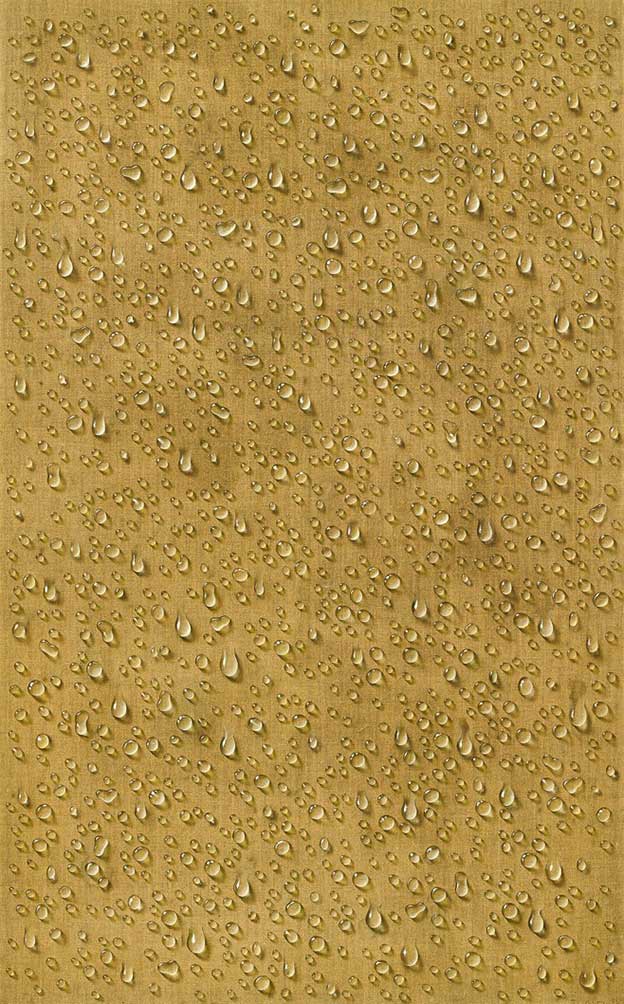A retrospective exhibition examining the work of Kim Tschang-Yeul (1929-2021), one of the most prominent figures in Korean contemporary art, offers a comprehensive look into the artist’s creative vision. It re-examines his body of work within the historical and art-historical context of modern and contemporary Korea. The rapid modernisation of South Korean society in the midst of war, division, industrialisation, and urbanisation in the mid-20th century left profound emotional scars on the artist.
This exhibition in Seoul invites viewers to look beyond the aesthetic allure of the water drop and engage with the artist’s underlying memories of trauma and search for fundamental beauty. Featuring previously little known early works from his New York period alongside rare archival material, the show aims to have a more nuanced understanding of Kim’s artistic evolution, seeking to discover the diverse formal vocabularies embedded within the motif of the water drop, and encouraging a renewed appreciation of his art.
In the 1950s,Kim played a leading role in the Korean Art Informel movement, pioneering efforts to blend Western modernist idiom. Art lnformel was not merely a stylistic approach, but an act of imprinting the scars of war onto a canvas, like bullet holes or the tracks from tank treads It became, for him, a ritual of mourning and
remembrance, a way of consoling the trauma of death. The period marked a significant starting point for him in visualizing trauma through his artistic practice, and his works from this period often bore the title Rite.
Kim was also highly active in introducing Korean contemporary art on the international stage. In the absence of systematic government support, he participated on his own in the Second Paris Biennale in 1961 and the Eighth Sao Paulo Biennale in 1965, paving the way for artist-driven international exchanges. These efforts helped lay an important groundwork for the globalisation of contemporary Korean art and served as a turning point in Kim’s own artistic evolution.
In 1965, with a recommendation from his mentor Kim Whanki (1913-1974) and support from the Rockefeller Foundation, Kim moved to New York. At the time, the United States was actively engaged in efforts to elevate the global status of American art in the post-Second World War era, and Kim’s stay was part of this broader framework of international exchanges. However, life in New York was far from tranquil. The Informal painting he had steadily pursued in Korea failed to gain recognition, and the emotional dissonance he experienced in a capitalist consumer society left him with deep feelings of alienation and disillusionment.
However, it was during this time that his work underwent a major transformation. Thick and rough Informal textures began to give way to smooth, refined surfaces populated by geometric forms. Optical illusions of depth and perspective appeared, with spherical shapes set within colour bands, evoking images of compressed internal energy on the brink of expanding outwards.
In 1969, Kim left behind the feelings of isolation he experienced in New York and relocated to Paris. There, he began his Phenomenon series in which the cold geometric structures of his previous works gave way to fluid organic forms. These condensed masses were rendered with a viscous texture resembling human entrails. Kim referred to these works as “intestine art” as he explored the themes of corporeality, materiality, and the boundary between abstraction and representation. In the early 1970s, this experimental period then led to the development of his signature ‘Waterdrop’ paintings, providing a crucial milestone in the progression of his oeuvre.
The viscous, mucous-like forms that characterised Kim Tschang-yeul’s previous works transformed in 1971 into transparent drops of water. One day, while attempting to reuse a canvas, he noticed a droplet of water had formed on its surface. Within that fleeting moment, he sensed the fullness of a complete and resolved form. The emergence of the water drop was not merely a product of chance:
From that point on, Kim steadily gained recognition both in South Korea and abroad. While rendered with meticulous realism, his water drop spans the boundary between reality and illusion, positioning themselves somewhere between photorealism and surrealism. In his early works, airbrushed drops were set out on coarse surfaces such as raw linen, sand, or wood. Rather than simply objects, It was the culmination of years of experimentation, resting on a surface, these drops appear to contemplation, and philosophical inquiry, an
inevitable discovery born of artistic necessity.
At the exhibition, viewers are invited to look beyond the aesthetic allure of the water drop and engage with the artist’s underlying memories of trauma and search for fundamental beauty. Featuring previously little-known early works from his New York period alongside rare archival materials, the exhibition allows for a more nuanced understanding of Kim’s artistic evolution. It also seeks to discover the diverse formal vocabularies embedded within the motif of the water drop, encouraging a renewed appreciation of his art.
Unfolding across Galleries 6 and 7, the show is divided into four sections: Scar, Phenomenon, Waterdrops, and Recurrence. Gallery 8 serves as a type of appendix to the exhibition, presenting unpublished archival materials and works that allow visitors to encounter the artist’s life and creative process from multiple perspectives.
Until 21 December, National Museum of Modern and Contemporary Art, Seoul, mmca.go.kr






